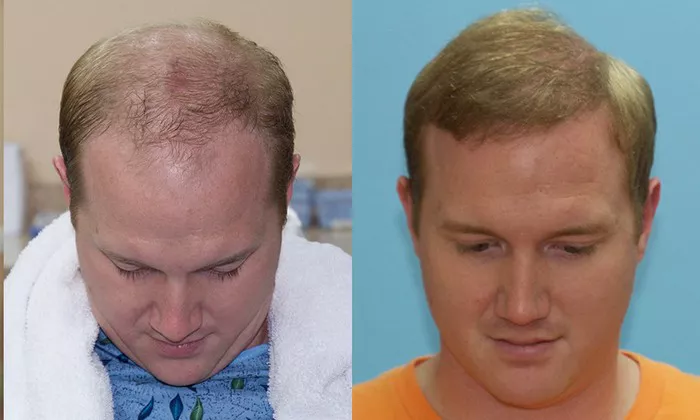Hair transplant surgery is a popular solution for those experiencing hair loss. After the procedure, patients often have many questions regarding post-operative care, including when it is safe to comb their hair. This article aims to provide a detailed guide on when you can start combing your hair after a hair transplant, along with tips for doing so safely and effectively.
Understanding Hair Transplant Surgery
Before discussing post-operative care, it’s essential to understand the basics of hair transplant surgery.
Types of Hair Transplants
Follicular Unit Extraction (FUE): Individual hair follicles are extracted from the donor area and implanted into the thinning or balding areas.
Follicular Unit Transplantation (FUT): A strip of scalp is removed from the donor area, which is then dissected into individual hair follicles for transplantation.
Both methods aim to restore hair density, but they involve different techniques and recovery processes.
What to Expect After a Hair Transplant
Following a hair transplant, the scalp requires careful management to ensure optimal healing and hair growth.
Initial Recovery Phase
Days 1-3: Expect some swelling, redness, and discomfort in the donor and recipient areas. Scabs may form over the transplanted follicles.
Days 4-7: Swelling usually subsides, but the scalp may remain sensitive. Scabs will begin to fall off.
Hair Shedding
It’s common for transplanted hair to fall out within two to three weeks after the procedure. This is often referred to as “shock loss” and is a normal part of the hair growth cycle.
When Can I Start Combing My Hair?
Timing: Most surgeons recommend waiting at least 10 to 14 days after a hair transplant before attempting to comb your hair. This waiting period allows the scalp to heal adequately and reduces the risk of damaging the newly transplanted follicles.
Factors Influencing Timing
Surgical Technique: The method used (FUE vs. FUT) can influence how soon you can start combing. FUE typically involves less trauma to the scalp, allowing for earlier combing.
Individual Healing: Each person heals differently. If you experience prolonged redness, swelling, or discomfort, it’s best to consult your surgeon before resuming combing.
Surgeon’s Advice: Always follow your surgeon’s specific recommendations regarding post-operative care, including when to start combing.
See Also: Understanding Numbness After Hair Transplant
Tips for Combing Your Hair Safely After a Transplant
Once you’ve received the green light to start combing your hair, consider the following tips to ensure safe and effective combing:
1. Use a Wide-Toothed Comb
Opt for a wide-toothed comb to minimize tension on the hair and reduce the risk of pulling out the transplanted follicles.
2. Be Gentle
Handle your hair gently, especially in the recipient area. Avoid tugging or pulling.
3. Avoid Wet Combing
Avoid combing your hair when it is wet, as wet hair is more susceptible to breakage. Wait until your hair is completely dry before combing.
4. Start Slowly
Begin by gently combing small sections of hair at a time. If you feel any discomfort or notice any hair loss, stop immediately.
5. Avoid Heat Styling
Refrain from using heat styling tools (such as blow dryers, straighteners, or curling irons) for at least the first month after your transplant, as heat can damage both your natural and transplanted hair.
6. Stay Hydrated and Nourished
Maintain a healthy diet rich in vitamins and minerals that promote hair growth. Staying hydrated can also support the healing process.
Post-Transplant Hair Care
In addition to knowing when to comb your hair, understanding proper post-transplant hair care is crucial for promoting healthy hair growth.
1. Follow Aftercare Instructions
Your surgeon will provide specific aftercare instructions, including how to clean your scalp, medications to take, and activities to avoid.
2. Gentle Shampooing
Use a mild, sulfate-free shampoo to clean your hair and scalp. Avoid vigorous scrubbing, and gently massage the shampoo into the scalp.
3. Moisturize Your Scalp
Keeping your scalp moisturized can help prevent dryness and irritation. Consult your surgeon for suitable products to use.
4. Avoid Sun Exposure
Protect your scalp from direct sunlight for at least a month after surgery. Wearing a hat or using sunscreen on exposed areas can help.
Signs to Watch For
After a hair transplant, it’s essential to monitor your scalp for any unusual signs that may require medical attention:
Excessive Bleeding: If you notice any unusual or excessive bleeding from the donor or recipient sites, contact your surgeon.
Signs of Infection: Redness, swelling, pus, or a foul odor can indicate an infection and should be addressed immediately.
Prolonged Numbness: Numbness or tingling in the scalp that lasts beyond the expected healing time should be reported to your healthcare provider.
Conclusion
Combing your hair after a hair transplant is a crucial aspect of post-operative care. While it’s generally safe to start combing 10 to 14 days after the procedure, individual healing times may vary. Always follow your surgeon’s advice and take care to comb gently to protect your newly transplanted follicles. By understanding the recovery process and practicing proper hair care, you can enhance your chances of achieving the best possible results from your hair transplant.
You Might Be Interested In
- Do You Have to Shave Your Head for a Hair Transplant?
- Can a Hair Transplant Fix Your Hairline?
- When to Remove Scabs After a Hair Transplant: A Complete Guide


